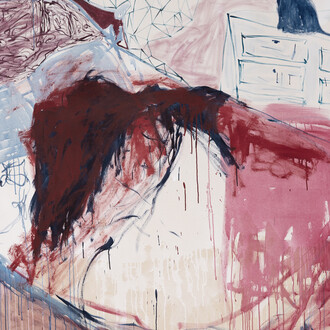Messy Realities: The Secret Life of Technology is a special display exploring the work of the research project SCALS: Studies in Co-creating Assistive Living Solutions. Through the Messy Realities display, an inter-disciplinary group of researchers, museum staff, designers and community members living with long-term health conditions set out to see if connections could be made between museum objects and contemporary medical technologies, particularly 'assisted living' technologies. If we put unexpected objects together, could meaningful connections be made? Could we spark new ideas about what 'assisted living technologies' are and find out new things about what they mean to the people who use them? Could we think about objects in the collections in new ways by viewing them alongside assisted living technologies? Visit the display to explore some of the connections we have made and help us answer "what is technology?" SCALS is a five-year programme funded by the Wellcome Trust and led by Professor Trish Greenhalgh, Department of Primary Care Health Sciences.
Often described as a museum of comparative technology, the Pitt Rivers collections can be understood as worldwide examples of technologies created to cope with the dilemmas of life. For example, ways to stay connected with loved ones; ways to worship; ways to care for family. To develop the Messy Realities display, we have thought about objects in the collections as technologies that assist people to live their lives, just like the assisted living medical technologies that we considered alongside them.
This object grouping shows how museum items have been grouped with assistive living technologies to create new meanings and make connections. The pocket and wrist alarms are designed for the wearer to summone help, for example, after a fall. The arrow head and leather neck ornament, worn as protective amulets, help the wearer feel safe. The Messy Realities project found pendant alarms can take on amuletic meanings, with some people wearing them to feel safe while out, even though they know they do not work out of range of their house.
The team includes researchers, museum staff, designers, people living with long-term health needs, their family and friends. Thinking about 'what is technoloogy?', conversations were stimulated by UK medical technologies and worldwide objects from the Museum collections. Putting diverse types of objects together led us to think that some museum objects could be reinterpreted as assisted living technologies. We also thought about how technologies from across the world hold meaning, are personalised and adapted, and how technology can support individuals as their long-term health needs progress.
We grouped together different types of containers, all used to hold 'medicine' and discussed what these groupings brought to mind. Dosset boxes can be pre-prepared by pharmacists or filled by the user at home, but are often replaced with Tupperware or other containers better suited to the person using them. The hollow shell of a nut from Uttar Pradesh Mirzapur, India, was collected from a local 'drug seller and surgeon' and held substances to aid health. The gilt metal box, decorated with lacquer varnish, with the attached wooden netsuke and ivory model of a house is an inro, or medicine box, from Japan. What different values can be associated with health aids? The nutshell, Tupperware and dosset boxes are functional, plain, with no intrinsic monetary value. In comparison, the decorative inro can indicate wealth and status. This object grouping stimulating interesting discussions from workshop participants about assisted living technologies, value, status and stigma.
"Our research group approached the Pitt Rivers Museum to explore these findings further, seeking inspiration from the museum collections to discuss use of technologies, and to generate new insights to inform our ongoing research. Working with community members and design students from Rycotewood at the City of Oxford College, we experimented with putting different objects together to spark new ideas, and to see technologies in new lights. We used a storytelling approach to try to capture the (sometimes mundane and imperfect) real-world settings in which assisted living technologies come to be used and acquire meaning - or alternatively, rejected as lacking meaning or not 'working properly'."
















